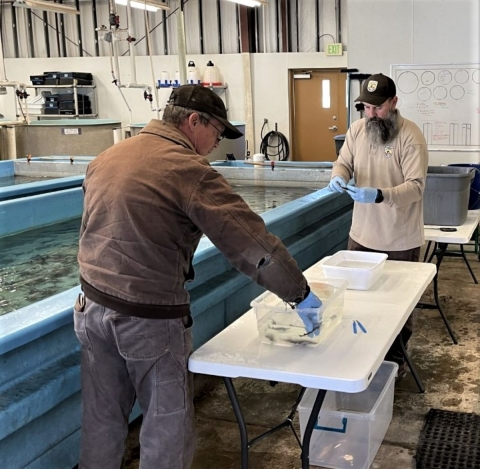Lake Sturgeon were once found across the Midwest in strong populations and during the 1800’s were looked at as useless and left to die. This act was so common that the railway started to use dried sturgeon carcasses as fuel for their steam engines. Later, when caviar became popular, female sturgeon were highly sought after for their eggs. The fish were caught, stripped of eggs, and discarded. Due to this style of overfishing and other human-caused pressures, the population has declined dramatically and is now in need of assistance.
Facilities like Mammoth Spring National Fish Hatchery (MSNFH) have been assisting in the National efforts to repopulate and restore Lake Sturgeon for numerous years. The last few weeks have been busy preparing sturgeon for shipment by tagging the fish, which is done by removing a few of the bony plates called scutes. Specific scutes to be removed have been determined by the Lake Sturgeon Restoration Team. Each combination of removed scutes are associated with a specific year class of sturgeon.
Mammoth Spring NFH stocked 3,500 Lake Sturgeon in the Cumberland River in Dover, Tn. and 5,167 sturgeon in the Cumberland River below the Cheatham Lock and Dam Access near Charlotte, Tennessee. In total, the MSNFH successfully raised and stocked 8,667 Lake Sturgeon. These fish are stocked as part of the conservation program to increase one segment of the Lake Sturgeon population.




